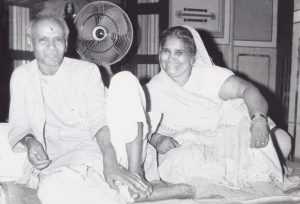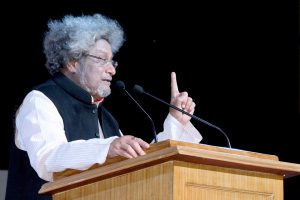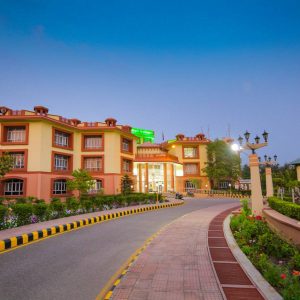Computer Science Department
The computer science department – is at the heart of a computing and related to every interdisciplinary activity on the Campus. It plays a vital role in providing state of the art facilities to students in the field of Information Technology. It is also a place where students can obtain an outstanding education in computer science through a variety of graduate and post-graduate programs.
The Department has various labs for the students:
– Sc. Computer Lab
– Sc. Computer Lab
– Animation Lab (2 Labs for Diploma and Advance Animation Courses)
The computer centre is equipped with a Server. Each desktop is connected to servers through structured cabling. Entire B.Sc. [CS] and M.Sc. [CS] computer practical classes are held at main computer Labs one and two. The dept also organizes workshops on many new innovative fields of computer science, and development and holds training sessions for various users to get them acquainted with the latest technology in the IT field.
For strengthening these labs the following hardware and software have been added:
– High-performance IBM server with dual Intel processors
– Using star topology to connect all computers in the network
– Network Laser printer with automatic duplex printing
– PIV machines upgraded to 512 MB, 1GB and 4 GB RAM[Animation] with TFT monitors.
– High-speeded wireless access point with IBM servers and notebook with mobile computing facility
The following software has been used in the whole Institute:
– Microsoft Office Professional
– Windows XP Professional with SP2 and SP3
– Net 2005, Vstudio.Net 2010 Professional
– Windows Sever Std 2003
Journalism And Mass Communication Department
The journalism and mass communication department computer lab is equipped with 26 systems with an Internet facility.
– For print media students work on software like Quark Express, Photoshop etc. and workout departmental newspaper at regular intervals.
– The lab is also equipped with cameras for training purposes and video editing software like premium pro and sound forge. Students work out Radio and TV documentaries and other programmes on them.
– The clipping room is equipped with about 15 daily newspapers and about 30 magazines which keeps the students updated with the latest developments and helps in their research work.
Clinical Psychology Department
The main aim of the Clinical Psychology department is to develop the mental, practical and emotional potential of the student. The department not only concentrates on the basic principles of modern psychology but also emphasizes associating the ancient sciences of Indian culture such as Yoga and Ayurved with the modern science of psychology. The department contributes a great deal to the designing of the psycho-spiritual model. The model not only includes the basic psychological treatments but also provides a beautiful collaboration of alternative treatments such as Yog Nidra, Pranic healing, Reiki, Acupressure etc to treat people with mental problems. That is the sole reason for the success of more than 250 cases that were thought to be very challenging.
Three Special Laboratories
The three laboratories with salient features and with the latest available equipment are determined to help the students as well as the research scholars residing in the university. The equipment includes various bio-feedback machines, it should be noted that various researches are being carried out with the help of these bio-feedback machines combining the two super-healing techniques i.e. Yoga and Psychology (the bio-feedback machine is used to measure muscular activity and is being used in research to see how Dhyan (meditation) helps to reduce the stress). Similarly, with the help of an EMG bio-feedback machine, the process of stress reduction and relaxation due to various yogic practices and psychological treatments is also being measured.
What is Bio-feedback?
Biofeedback, or applied psychophysiological feedback, is a patient-guided treatment that teaches an individual to control muscle tension, pain, body temperature, brain waves, and other bodily functions and processes through relaxation, visualization, and other cognitive control techniques. The name biofeedback refers to the biological signals that are fed back, or returned, to the patient in order for the patient to develop techniques of manipulating them. Biofeedback techniques are used for a wide range of disorders including migraine and tension headaches, low back pain and hypertension.
- i) Alpha EEG Biofeedback
A type of biofeedback that measures the alpha-brain waves. Most applications used for biofeedback are based on a quantitative analysis of the brain waves. Alpha biofeedback is the process of monitoring and displaying to an individual the ongoing Alpha EEG activity generated by his brain. Its most common clinical application is to redress a chronic mental posture constitutively a component of psychosomatic or psychological disorder.
- ii) GSR Biofeedback
Feedback demography is the process of monitoring and displaying to an individual his skin’s ongoing electrical properties and activity. Galvanic Skin Resistance (GSR) Feedback is utilized clinically as a convenient indicator of emotional responses and as a training tool for generalized reduction of sympathetic activity and the treatment of related psychosomatic and psychological disorders.
iii) Pulse Biofeedback
Pulse biofeedback is the process of monitoring and displaying to an individual the ongoing heartbeat. Its most common clinical application is to control dangerous heartbeat irregularities by force of mental discipline alone. It is important to control tachycardia and these irregularities as their presence is associated with an increased probability of sudden death.
- iv) Respiration Biofeedback
Respiration Feedback is the biofeedback of the abdominal respiratory excursion. It has proved to be a psychotherapeutic training method that is easy to apply and which has rapid and intensive effects.
- v) EMG Biofeedback
EMG Biofeedback electromyography is the process of monitoring and displaying to an individual the ongoing contraction and relaxation patterns generated by his or her skeletal muscles. Its objective is to heighten proprioceptive awareness of the mechanisms of muscle flexure and to develop voluntary control over dysfunctional, semi-voluntary, or involuntary muscle activity.
- vi) Nerve Conduction Velocity
Neuroperfect EMG-2000 is an EMGCU/EP System. Using it we can collect analyse, print and store a wide range of nerve conduction Electromyography and Evoked potentials data. Nerve conduction studies are commonly performed in the evaluation of suspected neuromuscular disease and provide an objective measure of pathophysiologic changes. Using Neuroperfect EMG-2000 one can perform Motor Nerve Conduction, Sensory Nerve Conduction, Facial Nerve Conduction, E-Wave etc.
vii) Multi-Channel EEG Machine
A type of Biofeedback that measures the brain waves. Alpha wave activity EEG activity is generally associated with an alert but relaxed state, usually defined as 8 to 12 Hz. Beta wave activity EG activity associated with an alert state is often defined within the range of 16 to 20 Hz. Theta wave activity EEG activity is generally associated with a drowsy, non-attentive state, usually defined as 4 to 8 Hz.
viii) Audio Visual Reaction
Time Apparatus: – This is an apparatus to test the quickness in reflexes of a driver and to impart try to further improve upon it. Here the reaction time is taken by a driven to various audiovisual sig. are recorded up to an accuracy of 1/1000 of a sec.
- ix) Mirror drawing Apparatus
This apparatus measures hand-eye coordination in a variety of experimental studies. We can study bilateral transfer from one hand to another. We can study the practice effect by mirror drawing apparatus.
- x) Tachistoscope
Tachistoscope helps in testing the subject’s visual speed. We can measure the span of attention of the subject. The number of objects which can be graphed in one short presentation is called span of attention.
- xi) Electronic Depth perception Apparatus
This is an apparatus to access a driver’s depth perception ability i.e. how he perceives a thing in three dimensions. Here, depending upon a driver’s performance, he can be classified and given more trg on this simulator. A driver’s performance on this apparatus improves considerably with progressive trg and helps him to have better depth perception.
One hundred and fifty-five tests are available in the psychology lab. These tests are classified as follows:
TEST
- A) Test of intelligence and other abilities: – Such as verbal intelligence test, Raven’s Coloured progressive matrices (CPM), Bhatia’s Battery of performance test of intelligence, a group test of intelligence.
- B) Test of creativity – Passi test creativity, creative thinking
- C) Aptitude tests – A teaching aptitude test, scientific aptitude test
- D) Value test – value conflict test, social value, personal value
- E) Aspiration scale – level of Aspiration measure
- F) Parent-child relationship and home environment scales
- G) Interpersonal relations, Machiavellianism scale and maturity scales – Emotional competence scale
- H) Personality Inventories and Related Tests: – 16 P.F. Questionnaires, Dimensional Personality Inventory, High School Personality Inventory.
- I) Tests for assessing Clinical Aspects of Personality: – Eysenck’s Maudsley Personality Inventory (MPI), Eight State Questionnaire (85Q), Adjustment Neuroticism Dimensional inventory.
- J) Projective Techniques: Thematic Apperception Test (TAT), Sentence Competition test, Rorschach Inkblot Test.
- K) Stress and Anxiety test
- L) Socio economic status scales
- M) Self-concept and self-related variable
- N) Motivational test: – Power motive, affiliation motive, achievement motive
- O) Neuro – Psychological assignment and related test memory scales, mental health battery
- P) Problem solving and reasoning ability tests





